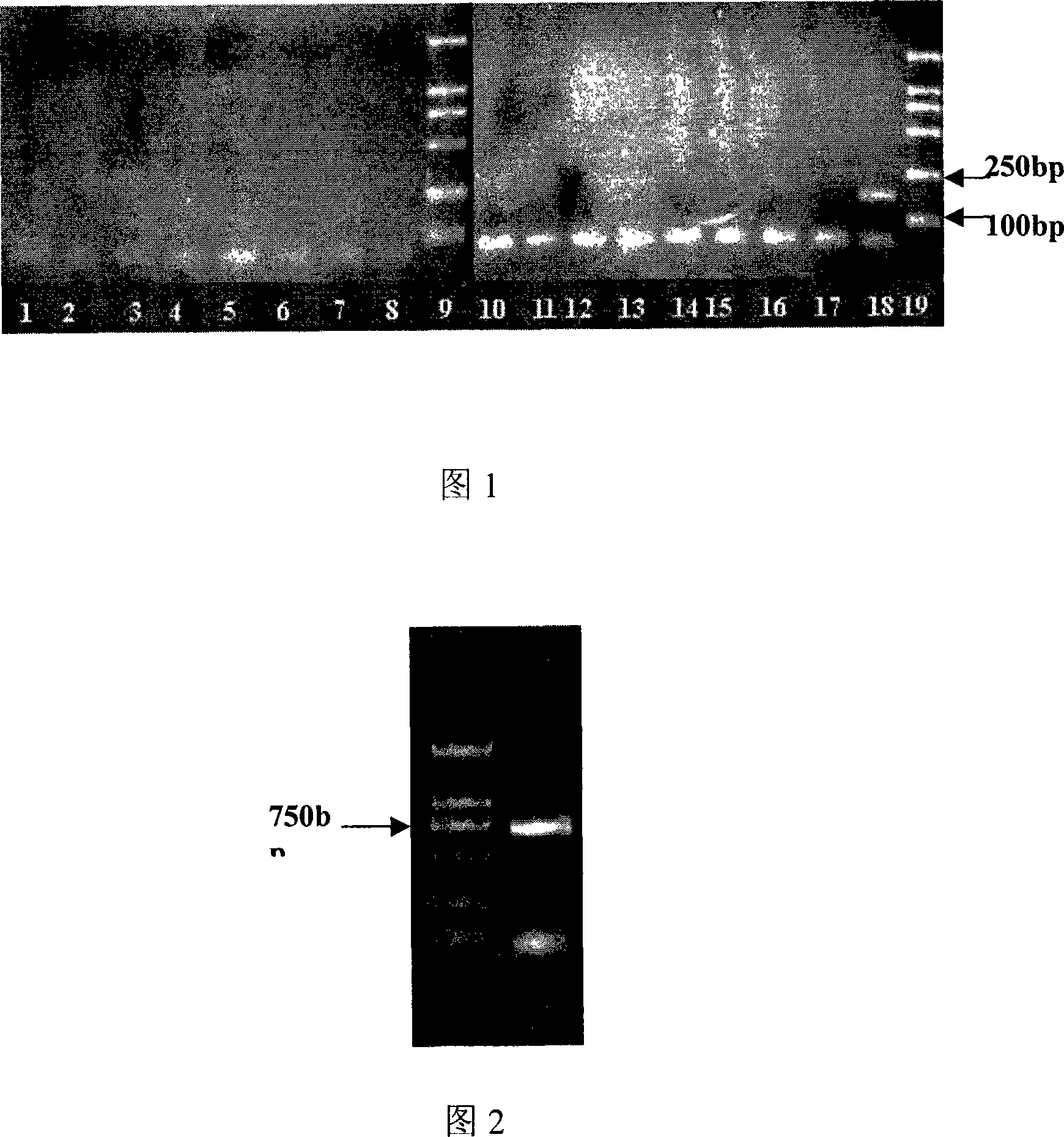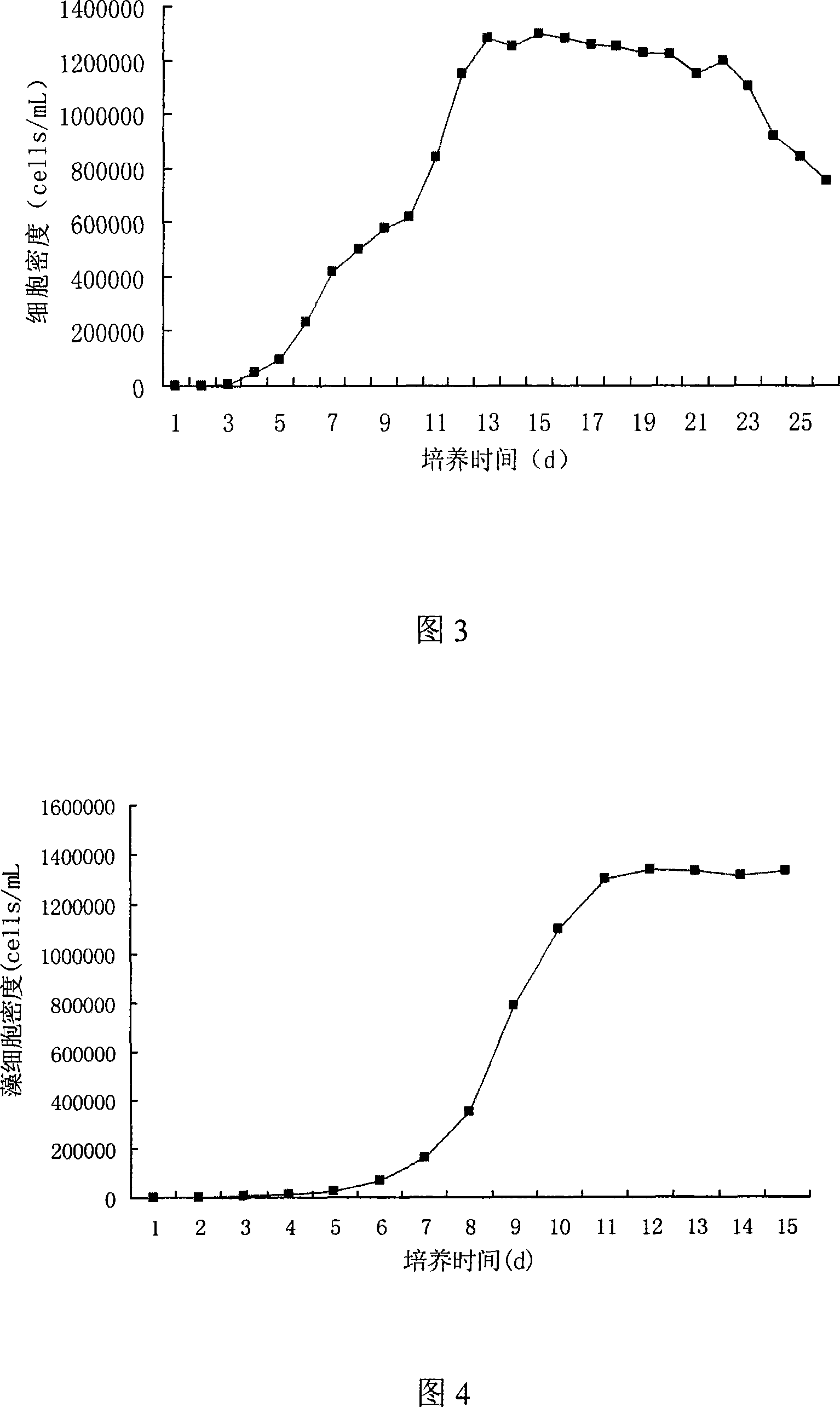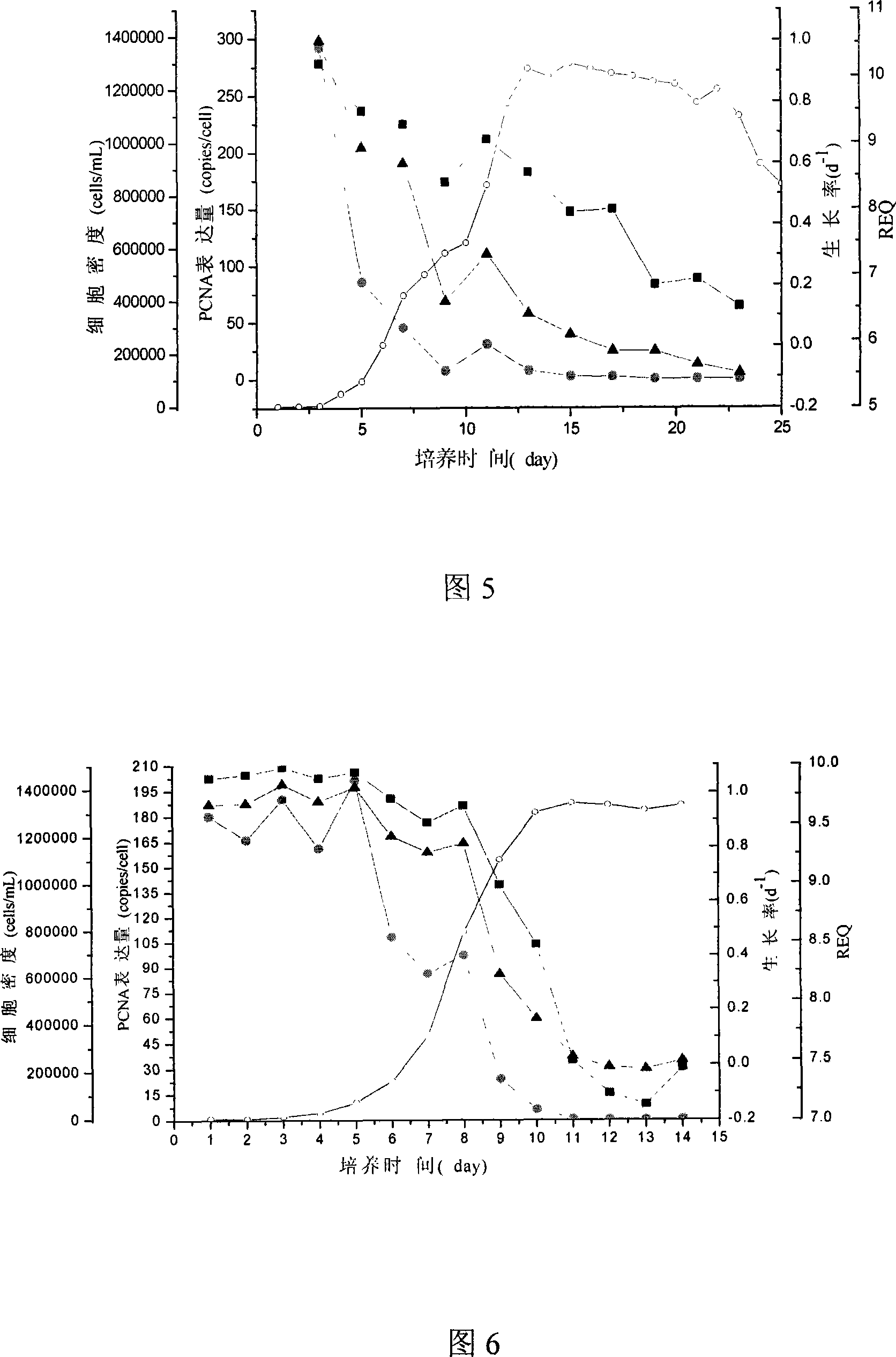Method for detecting growth rate of skeletonema costatum
A technology of growth rate and ribs, which is applied in the field of detection of planktonic diatoms, can solve the problems that basic physiological and ecological parameters such as the growth rate of planktonic algae cannot be measured, and achieve the effect of improving specificity
- Summary
- Abstract
- Description
- Claims
- Application Information
AI Technical Summary
Problems solved by technology
Method used
Image
Examples
Embodiment Construction
[0054] In the embodiment of the present invention, the culture process of Skeletonemacostatum is: Skeletonemacostatum (Skeletonemacostatum) is cultivated to logarithmic growth phase with F / 2 medium in the laboratory, culture conditions: light / dark cycle is 12h / 12h , the light intensity is 4000Lux, and the culture temperature is 22-25°C.
[0055] Collect 5 parts of Skeletalum costanum (cell density is 4.1×107 cells / mL) cultured for one week about 3.8×10 7 cells (the weight of the algae concentrate is about 150mg). Use the following RNA extraction methods to extract:
[0056] (1) Collect algae cells and grind them into fine powder with a mortar under the condition of continuously adding liquid nitrogen;
[0057] (2) Add the grinding liquid to 1mL TRIZOL reagent, and homogenize at room temperature for 5min;
[0058] (3) Add 200 μL of chloroform, shake vigorously for 15 seconds, and incubate at room temperature for 3 minutes;
[0059] (4) Centrifuge at 12000rpm for 15min at 4°...
PUM
| Property | Measurement | Unit |
|---|---|---|
| Cell density | aaaaa | aaaaa |
Abstract
Description
Claims
Application Information
 Login to View More
Login to View More - R&D
- Intellectual Property
- Life Sciences
- Materials
- Tech Scout
- Unparalleled Data Quality
- Higher Quality Content
- 60% Fewer Hallucinations
Browse by: Latest US Patents, China's latest patents, Technical Efficacy Thesaurus, Application Domain, Technology Topic, Popular Technical Reports.
© 2025 PatSnap. All rights reserved.Legal|Privacy policy|Modern Slavery Act Transparency Statement|Sitemap|About US| Contact US: help@patsnap.com



